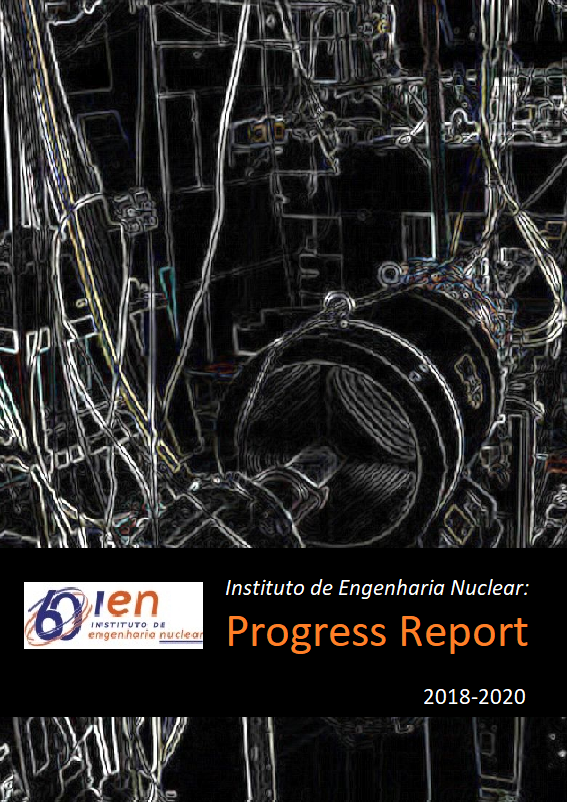Determination of density and mass attenuation coefficient of polylactic acid using gamma densitometry
Resumo
Polylactic acid (PLA) is a biodegradable organic acid of polymeric chain that has as chemical structure the monomer C3H4O2 and it is one of the most used materials in rapid prototyping among 3D printers. Printed PLA holders are used in experimental procedures using gamma radiation sources in the Laboratório de Medidas Nucleares of Divisão de Radiofármacos of the Instituto de Engenharia Nuclear. In this way, the weight fractions and density of PLA samples were determined considering that this information is essential in order to perform the simulations using MCNPX code [1]. The weight fraction calculation gives the ratio of the mass of a compound component to the total mass of the compound, being for PLA 50% of carbon, 44.4% of oxygen and 5.6% of hydrogen [2]. In order to calculate the density, the sample mass was weighted using a precision balance with 1 mg of uncertainty. For volume measurement, Archimedes’ Principle was used. Density obtained was 1.108 ± 0.555 g.cm-3. Simulations were carried out using the MCNPX code and experimental measurements were made as follows Figure 1 [2].
The geometry consists of a NaI(Tl) detector were dimensions were obtained in previous research through gammagraphy technique, gamma rays of 137Cs (661.6 keV) as radiation source and 3D printed PLA samples [2]. The proposed methodology was repeated replacing the PLA sample by aluminum (Al, r = 2.6989 g.cm-3) to validate the simulation and experimental measurements. Mass attenuation coefficients of the PLA and Al samples and NIST [3] reference values are shown in Table 1 and Table 2. Relative error (RE%) was calculated in order to compare results obtained in this report with reference values. RE2 is relative error between experimental and MCNPX, meanwhile RE3 is the relative error between experimental and NIST.
Table 1. Mass attenuation coefficients of PLA and Al using MCNPX code
Sample
m/r (cm2.g-1)
RE (%)
MCNPX
NIST
PLA
0.08066
0.08147
0.99%
Al
0.07438
0.07468
0.40%
Table 2. Experimental mass attenuation coefficients of PLA and Al
Sample
m/r (cm2.g-1)
RE2 (%)
RE3 (%)
Experimental
PLA
0.0831 ± 0.0039
2.94
1.64
Al
0.0705 ± 0.0035
-5.80
-6.23
Simulated results indicate good agreement with NIST values and RE is below 1%. Experimental results showed a good agreement with simulation and reference value from NIST. These results show that MCNPX code is a great tool to study attenuation coefficients. More details can be found in SANTOS et al. (2020) [2].
Downloads
Publicado
Como Citar
Edição
Seção
Licença
Copyright (c) 2021 Alessandra Galvão Menezes dos Santos, Ross Sophia de Freitas Dam, William Luna Salgado, Roberto Schirru, César Marques Salgado

Este trabalho está licenciado sob uma licença Creative Commons Attribution-NonCommercial-NoDerivatives 4.0 International License.


